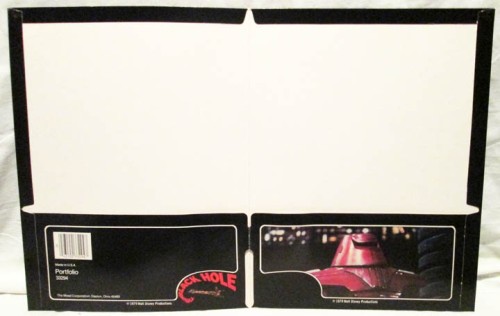




Chuck Comisky was the special effects supervisor on Roger Corman’s Battle Beyond the Stars (1980), a fun, clever sci-fi adaptation of The Magnificent Seven. His interview defines what was great about B movies when the people who made them had the integrity and talent to turn serious time and money constraints into lasting artistic triumphs, many of the productions outdoing their big budget counterparts. Here’s Comiski summing it up:
And what we’re doing is we’re substituting ingenuity, hard work, and a little bit of common sense for a big budget. When you don’t have money and you don’t have a big budget, it forces you to think creatively. You have to say, “How the hell are we gonna’ get the shot and make it look good: We don’t have any money to do it with.” So then you find yourself manufacturing some of your models out of greeting card racks and terrariums and developing systems… to avoid matte problems.
Comiski has some curt words for the first art director on the film, who “never took the trouble to look at the [spaceship] models and try to match up the interiors to the ships.” Comiski and his crew had to sort all of that out in addition to doing all the effects. The first art director was fired before shooting started and Comiski hired a replacement: James Cameron*. It was Cameron’s big break, and he went on to do some really brilliant work for other notable B features, including Escape from New York and Galaxy of Terror (both from 1981).
Comiski has great things to say about the visual effects in Star Wars, but he pans The Black Hole and Star Trek: The Motion Picture for being bloated and unimaginative—for substituting money for “creative imagination.” Fantastic Films asks him if he would have done more elaborate effects if the budget had been bigger. “No,” he says. “If I had more money, the one thing I would do is pay my people more money.”
Cameron, after Titanic made all that money and won all those Oscars, would return the favor and hire Comiski as visual effects supervisor for Ghosts of the Abyss (2003) and, later, as 3D specialist on Avatar (2009). The irony is almost painful: Avatar is the most bloated sci-fi production in history, a textbook case of throwing money at effects to gloss over a hackneyed script. I won’t say it doesn’t look like shiny candy, or that it didn’t make a gazillion dollars, but I’d much rather rewatch Battle Beyond the Stars. It’s a superior film with, yes, better special effects.
_________________________________________
*In The Directors: Take One, Volume One (Ed. Robert J. Emery), Cameron says: “I was actually hired by the head of visual effects on a movie called Battle Beyond the Stars… Then they fired the art director because he wasn’t prepared… So I said, `Oh, I’ll do that.’ So I became the art director on the film.”
The Wikipedia entry on Battle Beyond the Stars reads, in part: “after the original art director for the film had been fired, Cameron became responsible for the special effects in Battle Beyond the Stars, or, as Cameron later put it, `production design and art direction.'” This is incorrect. Comiski was in fact responsible for special effects, which are not the same thing as production design or art direction.
Charles Breen appears to be the art director who was fired. Breen was assistant art director on, go figure, Terminator 2: Judgement Day.
(The first installment of Fantastic Films #20 is here.)


























































































